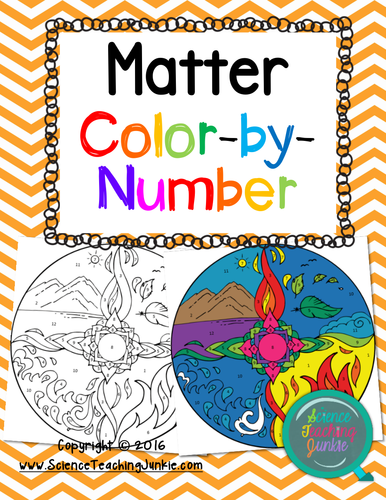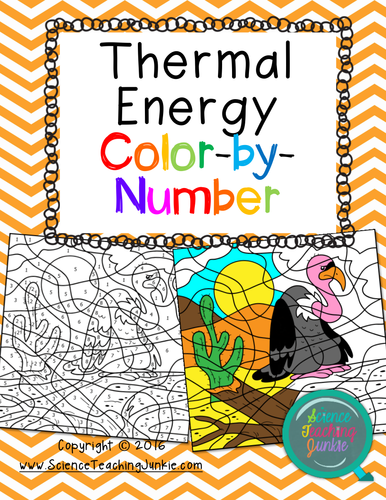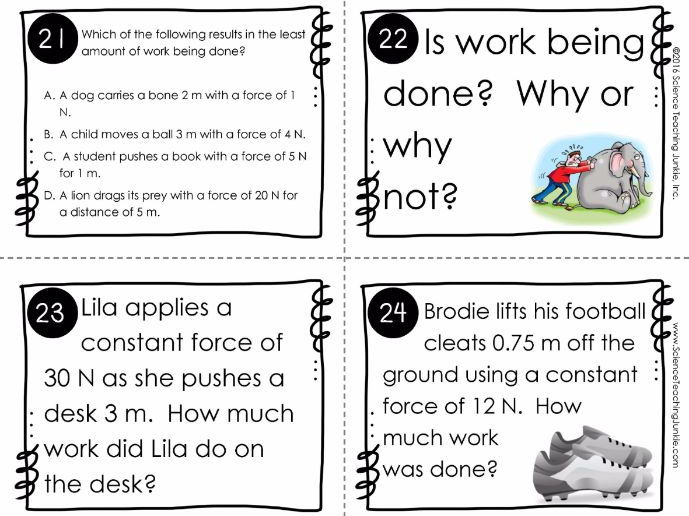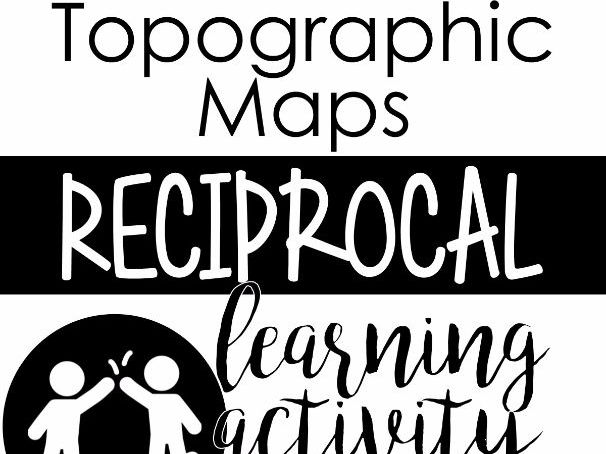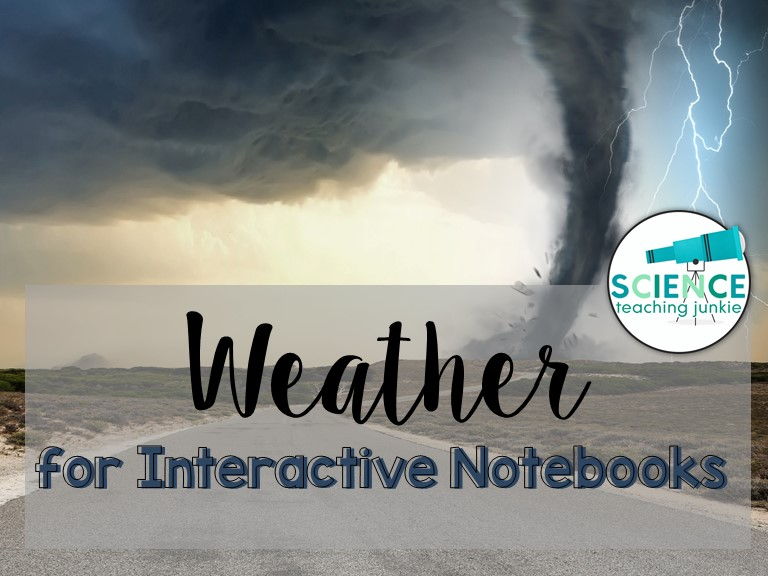
52Uploads
37k+Views
979Downloads
Physics

Daily Science Starters for Middle School - FREEBIE
This FREEBIE pack gives you a taste of what you can expect from my Daily Science Starters Products. I chose 3 Science Starters from each of the 4 products and bundled them into this freebie for you!
They are aligned with the middle school TEKS, so students are sure to be exposed to all content required in the middle grades and you can rest assured that they will be prepared for the state standardized assessment.
Each Science Starter student printable comes four to a page, saving you paper and ink. Each Starter also includes a teacher version that can be used to project the questions and/or answers for all students to see.
WANT TO GET ALL 4 OF MY DAILY SCIENCE STARTER PRODUCTS IN A BUNDLE AND SAVE 20%?
© Science Teaching Junkie. Terms of Use - this resource is for use by one teacher only. Additional teachers must purchase their own license. If you are interested in purchasing several licenses, please contact me for a district-wide or campus-wide quote. ScienceTeachingJunkie@yahoo.com

Plate Tectonics Color-by-Number
This product is a color-by-number activity that allows students to match vocabulary terms with definitions. And YES- even secondary students love to color!
Related Plate Tectonics terms include:
continental drift
asthenosphere
plate tectonics
lithosphere
subduction zone
convergent boundary
transform boundary
divergent boundary
earthquakes
volcanoes
rift valley & mid-ocean ridge
mountains
This could be used as a quick assessment, a homework assignment, or for early finishers.
If you like this activity,
© Science Teaching Junkie. Terms of Use - this resource is for use by one teacher only. Additional teachers must purchase their own license. If you are interested in purchasing several licenses, please contact me for a district-wide or campus-wide quote. ScienceTeachingJunkie@yahoo.com

Changes to Land: Weathering, Erosion, and Deposition Color-by-Number
This product is a color-by-number activity that allows students to answer questions and complete statements related to the weathering, erosion, and deposition. And YES- even secondary students love to color!
This could be used as a quick assessment, a homework assignment, extra credit, or for early finishers.
© Science Teaching Junkie. Terms of Use - this resource is for use by one teacher only. Additional teachers must purchase their own license. If you are interested in purchasing several licenses, please contact me for a district-wide or campus-wide quote. ScienceTeachingJunkie@yahoo.com

Scientific Method Color-by-Number
This product is a color-by-number activity that allows students to answer questions and complete statements related to the scientific method. And YES- even secondary students love to color!
Questions/Statements related to: testable hypothesis, making observations, independent variables, dependent variables, controlled variables (constants), identifying the parts of the scientific method (ask a question, form a hypothesis, test the hypothesis, analyze results, draw conclusions, communicate results), the type of graph that would be most appropriate (line, bar, pie).
This could be used as a quick assessment, a homework assignment, additional practice, extra credit, or for early finishers.
© Science Teaching Junkie, Inc. Terms of Use - this resource is for use by one teacher only. Additional teachers must purchase their own license. If you are interested in purchasing several licenses, please contact me for a district-wide or campus-wide quote. This product should NOT be posted on any website. ScienceTeachingJunkie@yahoo.com

Matter Color-by-Number
This product is a color-by-number activity that allows students to answer various questions relating to matter. And YES- even secondary students love to color!
There are 12 different questions with 2 answer choices for students to choose from. Each answer choice corresponds to a different color. If all of the correct answer choices are chosen, then their final picture will be colored correctly to reflect complete mastery of the content.
Terms/concepts students need to know in order to be successful with this product are:
•(states of matter) solid, liquid, gas: speed of molecules, energy between particles, attraction, space between particles, firmness, volume, shape
•boiling point
•freezing point
•melting point
•density, volume, mass
This could be used as a quick assessment, a homework assignment, additional practice, extra credit, or for early finishers. These are also great for days when you have to be out of the classroom - a sub can easily take over this lesson!
© Science Teaching Junkie, Inc. Terms of Use - this resource is for use by one teacher only. Additional teachers must purchase their own license. If you are interested in purchasing several licenses, please contact me for a district-wide or campus-wide quote. This product should NOT be posted on any website. ScienceTeachingJunkie@yahoo.com

Potential and Kinetic Energy Task Cards
This PDF includes 32 task cards that allow teachers to assess their students' knowledge of potential and kinetic energy (please see the extensive list of content that is covered below). A student answer sheet and teacher answer key are provided. An editable task card is included so that you can add your own task card question or task.
The following content/topics are included:
•classifying examples of potential and kinetic energy
•energy is the ability to move or cause changes in matter
•ways to increase an object's potential energy
•ways to increase an object's kinetic energy
•examples of kinetic energy being converted into potential energy
•various questions relating to a pendulum (greatest potential, greatest kinetic, position where potential and kinetic energy are equal)
•recognizing that when kinetic energy is high, potential energy is low
•using a data table of info, determine the amount of kinetic energy when potential energy and total energy are provided
•comparing how potential and kinetic energy are alike
© Science Teaching Junkie, Inc. Terms of Use - this resource is for use by one teacher only. Additional teachers must purchase their own license. If you are interested in purchasing several licenses, please contact me for a district-wide or campus-wide quote. This product should NOT be posted on any website. ScienceTeachingJunkie@yahoo.com

Thermal Energy: Methods of Heat Transfer Color-by-Number TEKS 6.9A & TEKS 6.9B
This product is a color-by-number activity that allows students to answer various questions relating to the 3 methods of heat transfer (conduction, convection, and radiation). And YES- even secondary students love to color!
This product is great for assessing the following standards:
TEKS 6.9A Investigate methods of thermal energy transfer, including conduction, convection, and radiation.
TEKS 6.9B Verify through investigations that thermal energy moves in a predictable pattern from warmer to cooler until all the substances attain the same temperature such as an ice cube melting.
There are 8 different questions with 3 possible answer choices each. Each answer choice corresponds to a different color. If all of the correct answer choices are chosen, then their final picture will be colored correctly to reflect complete mastery of the content.
To be successful with this activity, students should be able to:
•understand the 3 methods of thermal energy transfer: conduction, convection, and radiation
•know the predictable pattern in which heat travels (from warmer to cooler until all substances attain the same temperature)
This could be used as a quick assessment, a homework assignment, additional practice, extra credit, or for early finishers. These are also great for days when you have to be out of the classroom - a sub can easily take over this lesson!
If you like this activity,
©2016 Science Teaching Junkie, Inc. Terms of Use - this resource is for use by one teacher only. Additional teachers must purchase their own license. If you are interested in purchasing several licenses, please contact me for a district-wide or campus-wide quote. This product should NOT be posted on any website. ScienceTeachingJunkie@yahoo.com

Speed, Velocity, & Acceleration Task Cards
This PDF includes 36 task cards to help students demonstrate mastery on differentiating between speed, velocity and acceleration. Student answer sheets and teacher answer key are provided. Ideas on ways to use them in the science classroom are also included.
For students to be successful with utilizing these cards, they should have prior knowledge of the following concepts and/or vocabulary:
- speed (distance/time)
- velocity (speed in a direction)
- acceleration (change in speed and/or direction)
- distance vs. time on a graph (speed represented graphically)
- calculating speed (and average speed)
- calculating velocity
- forces cause an object to accelerate
- forces that may cause a moving object to slow, such as friction
- reading a graph
© Science Teaching Junkie, Inc. Terms of Use - this resource is for use by one teacher only. Additional teachers must purchase their own license. If you are interested in purchasing several licenses, please contact me for a district-wide or campus-wide quote. This product should NOT be posted on any website. ScienceTeachingJunkie@yahoo.com

Calculating Work Task Cards
This PDF includes 32 task cards that allow teachers to assess their students' knowledge of calculating work and recognizing that simple machines make work easier (please see the extensive list of content that is covered below). A student answer sheet and teacher answer key are provided. An editable task card is included so that you can add your own task card question or task.
The following content/topics are included:
•definition of work
•recognizing that in order for work to be done, the object must move in the direction of the force applied
•calculating work when given the work equation
•simple machines make work easier, but they do not decrease the total amount of work
•the effect of distance increasing and force decreasing
•spring scale is the tool used to measure force
•using data tables to determine people who are performing the same amount of work
•examples of work being done
•definitions for force, distance, work, Joule (or Newton-meter)
•how a simple machine, such as an inclined plane (ramp on a moving truck), effects work and the amount of force needed to move a box into the truck
© Science Teaching Junkie, Inc. Terms of Use - this resource is for use by one teacher only. Additional teachers must purchase their own license. If you are interested in purchasing several licenses, please contact me for a district-wide or campus-wide quote. This product should NOT be posted on any website. ScienceTeachingJunkie@yahoo.com

Newton's Laws Reciprocal Learning Activity
This reciprocal learning activity gives students the opportunity to practice demonstrating and calculating how unbalanced forces cause the motion of an object to change, determining the net force in a force diagram, describing applications of Newton's three laws of motion, identifying the action and reaction force, and calculating force, mass, and acceleration.
What is the Reciprocal Learning Strategy?
Reciprocal Learning is a student-pairing strategy designed with the principles of effective coaching in mind. Each pair of students forms a learning partnership committed to helping each other reach a particular learning goal. Each student plays two roles: as the player, each student works to complete an activity or solve a problem while “thinking out loud”; as a coach, each student observes the player’s work and listens to the player’s thinking while providing praise, feedback, and clues that help the player complete the activity. Because of these dual-roles, the power of learning is effectively doubled.
In this activity, each player is given 14 unique problems to solve as their coach guides, encourages, and provides support when needed. After these 14 problems are completed (and correct), the students switch roles and the second player solves 14 different problems as the other player coaches.
To see a quick overview of this teaching strategy,
©2016 Science Teaching Junkie, Inc. Terms of Use - this resource is for use by one teacher only. Additional teachers must purchase their own license. If you are interested in purchasing several licenses, please contact me for a district-wide or campus-wide quote. This product should NOT be posted on any website. ScienceTeachingJunkie@yahoo.com

Topographic Maps Reciprocal Learning Activity
This reciprocal learning activity gives students the opportunity to practice interpreting topographic maps. Each student in the partnership will have the chance to identify the contour interval, determine changes in elevation, distinguish between steep and gentle slopes, determine elevations of given points, identify common features found on maps, and much more!
What is the Reciprocal Learning Strategy?
Reciprocal Learning is a student-pairing strategy designed with the principles of effective coaching in mind. Each pair of students forms a learning partnership committed to helping each other reach a particular learning goal. Each student plays two roles: as the player, each student works to complete an activity or solve a problem while “thinking out loud”; as a coach, each student observes the player’s work and listens to the player’s thinking while providing praise, feedback, and clues that help the player complete the activity. Because of these dual-roles, the power of learning is effectively doubled.
In this activity, each player is given 10 unique problems to solve as their coach guides, encourages, and provides support when needed. After these 10 problems are completed (and correct), the students switch roles and the second player solves 10 different problems (with a different map) as the other player coaches.
To see a quick overview of this teaching strategy,
©2016 Science Teaching Junkie, Inc. Terms of Use - this resource is for use by one teacher only. Additional teachers must purchase their own license. If you are interested in purchasing several licenses, please contact me for a district-wide or campus-wide quote. This product should NOT be posted on any website. ScienceTeachingJunkie@yahoo.com

Reuniting Pangaea- Continental Drift Lesson
In this 2 part-lesson, students will collect data on fossil evidence and create their own landmass map with various colors to represent the locations of fossil discoveries. Then, they will cut out the landmasses and reassemble them logically to create a giant supercontinent (Pangaea). Students will share their decision and reasoning on the evidence with their group or partner, along with answering 4 conclusion questions.
The teacher will post the correct landmass model key and students will glue their Pangaea into their science notebook.
On Day 2, the teacher will read a passage on Alfred Wegener. Students will receive 10 sentence strips from the teacher and will use context clues to sequence the strips to create a timeline representing the historical development of the plate tectonic theory. At this point, the class can have a gallery walk and discuss the event sequence (optional).
The lesson will conclude with students answering conclusion questions over the 2-day lesson and writing a summary in their science notebook describing the historical evidence that supports the plate tectonic theory.

Stars, Galaxies and the EM Spectrum Task Cards
This PDF includes 36 task cards to help students demonstrate mastery on stars, galaxies and the electromagnetic spectrum. Two of the cards have been left blank so that you can add your own questions to the existing set. Student answer sheets and teacher answer key are provided. Ideas on ways to use them in the science classroom are also included.
For students to be successful with utilizing these cards, they should have prior knowledge of the following concepts and/or vocabulary:
- star life cycle
- nebulas
- light-years
- basic parts of a wave (crest, trough, wavelength, amplitude, frequency)
- types of galaxies (spiral, irregular, and elliptical)
- H-R Diagram
- magnitude
- star color in relation to temperature
- relative sizes (Earth, solar system, galaxy, universe)
- EM Spectrum
© Science Teaching Junkie, Inc. Terms of Use - this resource is for use by one teacher only. Additional teachers must purchase their own license. If you are interested in purchasing several licenses, please contact me for a district-wide or campus-wide quote. This product should NOT be posted on any website. ScienceTeachingJunkie@yahoo.com

Forces that Change the Earth Task Cards
This PDF includes 40 task cards (and 2 blank, editable PDF cards) to help students demonstrate mastery on various forces that shape the Earth. Student answer sheets and teacher answer key are provided. Ideas on ways to use them in the science classroom are also included.
For students to be successful with utilizing these cards, they should have prior knowledge of the following concepts and/or vocabulary:
- 3 plate boundaries (divergent, transform, convergent) and the effects of their movements
- continental crust vs. oceanic crust
- layers of the Earth (with basic facts)
- Theory of Continental Drift
- Theory of Plate Tectonics
© Science Teaching Junkie, Inc. Terms of Use - this resource is for use by one teacher only. Additional teachers must purchase their own license. If you are interested in purchasing several licenses, please contact me for a district-wide or campus-wide quote. This product should NOT be posted on any website. ScienceTeachingJunkie@yahoo.com

Moon Phases Reciprocal Learning Activity
This reciprocal learning activity gives students the opportunity to practice identifying and predicting moon phases. It also includes some information on the positions of the Sun and moon as they effect tides. The product also includes some bonus material that students can use prior to this activity to make sure they are comfortable and familiar with the moon phases when the Sun is located on the right side of the diagram and the left side of the diagram.
What is the Reciprocal Learning Strategy?
Reciprocal Learning is a student-pairing strategy designed with the principles of effective coaching in mind. Each pair of students forms a learning partnership committed to helping each other reach a particular learning goal. Each student plays two roles: as the player, each student works to complete an activity or solve a problem while “thinking out loud”; as a coach, each student observes the player’s work and listens to the player’s thinking while providing praise, feedback, and clues that help the player complete the activity. Because of these dual-roles, the power of learning is effectively doubled.
In this activity, each player is given 12 unique problems to solve as their coach guides, encourages, and provides support when needed. After these 12 problems are completed (and correct), the students switch roles and the second player solves 12 different problems as the other player coaches.
To see a quick overview of this teaching strategy,
©2017 Science Teaching Junkie, Inc. Terms of Use - this resource is for use by one teacher only. Additional teachers must purchase their own license. If you are interested in purchasing several licenses, please contact me for a district-wide or campus-wide quote. This product should NOT be posted on any website. ScienceTeachingJunkie@yahoo.com

General Classroom Supplies and Science Lab Materials Mini Posters
In this 40 page product, you will receive 112 mini posters in two different sizes (each poster comes in a 2" square and a 3.5" square). They are great for organizing your classroom and/or science storage room. The consistent, colorful design and clear text make finding supplies a breeze.
Ideas for other uses:
★could be used to display the materials students will need for a particular lesson (works great with low-level readers and English Language Learners)
★word wall terms for science tools and lab equipment
★post all of the lab tools that your scientists will need to know so that they are always visible
★tape to the front of plastic tubs or milk crates to get a quick visual on the contents inside
Poster Terms included:
◑Binder clips
◑Brads
◑Colored pencils
◑Composition notebooks
◑Calculators
◑Clipboards
◑Crayons
◑Dry erase markers
◑Glue
◑Headphones
◑Legos and Pop Cubes
◑Lined paper
◑Highlighters
◑Flair pens
◑Masking tape
◑Markers
◑Paper clips
◑Push pins
◑Scissors
◑Scotch tape
◑Pencils
◑Notebooks
◑Sharpeners and Erasers
◑Rulers
◑Discs
◑Sports balls
◑Bandaids
◑Movies
◑Washi tape
◑iPads
◑Goggles
◑Bulletin boards and banners
◑Dominoes
◑Dice
◑Envelopes
◑Puzzles
◑Glitter
◑Playing cards
◑Toy cars
◑Manila envelopes
◑Bubbloes
◑Balloons
◑Funnels
◑Forceps
◑Buttons
◑Tools
◑Bunsen burners
◑Spring scales
◑Styrofoam cups
◑Hair dryers
◑Springs
◑Chemicals
◑Straws
◑Yarn
◑Rocks
◑Prisms
◑Toothpicks
◑Droppers
◑Anemometers
◑Flashlights
◑Light bulbs
◑Wood blocks
◑Aluminum foil
◑Corks
◑Thermometers
◑Test tube racks
◑Test tubes
◑Tongs
◑Triple beam balances
◑Metersticks
◑Batteries
◑Tweezers
◑Craft sticks
◑Cups
◑Popsicle sticks
◑Rubber bands
◑String
◑Pie pans
◑Modeling clay
◑Pipe cleaner
◑Cardstock
◑Construction paper
◑Pens
◑Shower
◑Gloves
◑Flasks
◑Beakers
◑Graduated cylinders
◑Microscopes
◑Magnets
◑Magnifying glasses
◑Microscope slides
◑Petri dishes
◑Scales
◑Pipettes
◑Aprons
◑Mouse
◑Hot glue
◑Glue sticks
◑Charging cords
◑Hole punch
◑Scalpels
◑Grid paper
◑Sticky notes
◑Stopwatches
◑Ring stands
◑Index cards
◑Hot plates
◑Fire blanket
◑Hot mitts
◑Test tube clamps
◑Eye wash

Force and Motion Task Cards
This PDF includes 36 task cards to help students demonstrate mastery on various force and motion concepts. Student answer sheets and teacher answer key are provided. Ideas on ways to use them in the science classroom are also included.
For students to be successful with utilizing these cards, they should have prior knowledge of the following concepts and/or vocabulary:
- speed (distance/time)
- acceleration (change in speed and/or direction)
- balanced and unbalanced forces
- distance vs. time on a graph (speed represented graphically)
- speed vs. time on a graph (speed represented graphically)
- calculating speed (and average speed)
- forces such as friction, gravity and air resistance
- forces cause an object to accelerate
- Newton's 3 Laws of Motion
- reading a graph
- force diagrams
- calculating net force
- calculating force, mass and acceleration (F=ma)
© Science Teaching Junkie, Inc. Terms of Use - this resource is for use by one teacher only. Additional teachers must purchase their own license. If you are interested in purchasing several licenses, please contact me for a district-wide or campus-wide quote. This product should NOT be posted on any website. ScienceTeachingJunkie@yahoo.com

Daily Science Starters for Middle School - Force, Motion, and Energy
GREAT FOR WARM-UPS, EXIT TICKETS, OR QUICK FORMATIVE ASSESSMENTS!
This product includes 28 different quick Science Starters to be used at the beginning or end of each class period.
Each Science Starter student printable comes four to a page, saving you paper and ink. Each Starter also includes a teacher version that can be used to project the questions and/or answers for all students to see.
The last page of both the student printable and the teacher version includes an extra page for you to add your own Science Starter (editable PDF form).
Daily Science Starter TEKS Included:
(8.6) Force, motion, and energy. The student knows that there is a relationship between force, motion, and energy.
(A) demonstrate and calculate how unbalanced forces change the speed or direction of an object's motion;
(B) differentiate between speed, velocity, and acceleration;
(C) investigate and describe applications of Newton's law of inertia, law of force and acceleration, and law of action-reaction such as in vehicle restraints, sports activities, amusement park rides, Earth's tectonic activities, and rocket launches.
(7.7) Force, motion, and energy. The student knows that there is a relationship among force, motion, and energy.
(A) contrast situations where work is done with different amounts of force to situations where no work is done such as moving a box with a ramp and without a ramp, or standing still;
(B) illustrate the transformation of energy within an organism such as the transfer from chemical energy to heat and thermal energy in digestion;
(C) demonstrate and illustrate forces that affect motion in everyday life such as emergence of seedlings, turgor pressure, and geotropism
(6.8) Force, motion, and energy. The student knows force and motion are related to potential and kinetic energy.
(A) compare and contrast potential and kinetic energy;
(B) identify and describe the changes in position, direction, and speed of an object when acted upon by unbalanced forces;
(C) calculate average speed using distance and time measurements;
(D) measure and graph changes in motion;
(E) investigate how inclined planes and pulleys can be used to change the amount of force to move an object.
(6.9) Force, motion, & energy. The student knows that the Law of Conservation of Energy states that energy can neither be created nor destroyed, it just changes form.
(A) investigate methods of thermal energy transfer, including conduction, convection, and radiation;
(B) verify through investigations that thermal energy moves in a predictable pattern from warmer to cooler until all the substances attain the same temperature such as an ice cube melting;
(C) demonstrate energy transformations such as energy in a flashlight battery changes from chemical energy to electrical energy to light en

Weather for Interactive Notebooks
This PDF includes 33 full pages of various flippables, graphic organizers and activities for an Interactive Science Notebook to be used during a unit on Weather (12 pages are teacher answer keys).
Most foldables and flippables are left blank on the inside. This will allow you to fully customize each one for whatever curriculum or grade you teach with the information you want your students to know. Some ideas would be to use definitions, pictures, and examples. These also make a great tool to use for science differentiation as well!
Pages include information on:
•Differences in Temperature (in the oceans, on the Earth, in air masses)
•Jet Stream
•Weather vs. Climate
•Meteorologist for a Day (Forecasting the weather using a weather map)
•Pressure Systems and Fronts
•El Nino & La Nina (and normal conditions)
•Land and Sea Breezes
•Air Masses (3)
•Global Winds (2)
•Gyres
•Fronts (warm, cold, stationary, occluded)
•Air Pressure (Barometric Pressure)
•Weather instruments
•Reading Weather Maps
•Ocean Currents
•generic admit and exit tickets are included
WANT TO GET ALL 6 OF MY INTERACTIVE SCIENCE NOTEBOOK PRODUCTS IN A BUNDLE AND SAVE 10%?
©2016 Science Teaching Junkie, Inc. Terms of Use - this resource is for use by one teacher only. Additional teachers must purchase their own license. If you are interested in purchasing several licenses, please contact me for a district-wide or campus-wide quote. This product should NOT be posted on any website. Please email me with questions at ScienceTeachingJunkie@yahoo.com.

Earth Science for Interactive Science Notebooks
This PDF includes 36 full pages of various flippables, graphic organizers and activities for an Interactive Science Notebook to be used during a unit on Earth Science (8 pages are teacher answer keys).
Most foldables and flippables are left blank on the inside. This will allow you to fully customize each one for whatever curriculum or grade you teach with the information you want your students to know. Some ideas would be to use definitions, pictures, and examples. These also make a great tool to use for science differentiation as well!
Pages include information on:
•Generic Admit & Exit Ticket
•Layers of the Earth (2)
•Composition of the Earth's Crust
•Continental vs. Oceanic Crust
•Earth's Major Plates
•Plate Interactions
•Theory of Continental Drift vs. Theory of Plate Tectonics
•Alfred Wegener (who? what? where? when?)
•Plate Boundaries Card Sort
•Plates Jigsaw Puzzle
•Earth's Atmosphere
•Mohs Hardness Scale
•Identifying Unknown Minerals
•Properties of Minerals
•Special Properties of Minerals
•Rocks vs. Minerals
•Types of Rocks
•The Rock Cycle
•Latitude/Longitude
•Topographic Maps
•Topographic Matching Activity (match landform to topo map)
•Renewable/Non-renewable Vocabulary
•Renewable/Non-renewable Energy Identification
Looking for another earth science topic? If you don’t see something here that you would like added, please send me a message and I will do my best to get it added and update this product. Updates are always FREE for buyers.
Note: This interactive notebook product is NOT part of the . To see more interactive notebook products,
©2016 Science Teaching Junkie, Inc. Terms of Use - this resource is for use by one teacher only. Additional teachers must purchase their own license. If you are interested in purchasing several licenses, please contact me for a district-wide or campus-wide quote. This product should NOT be posted on any website. Please email me with questions at ScienceTeachingJunkie@yahoo.com.





